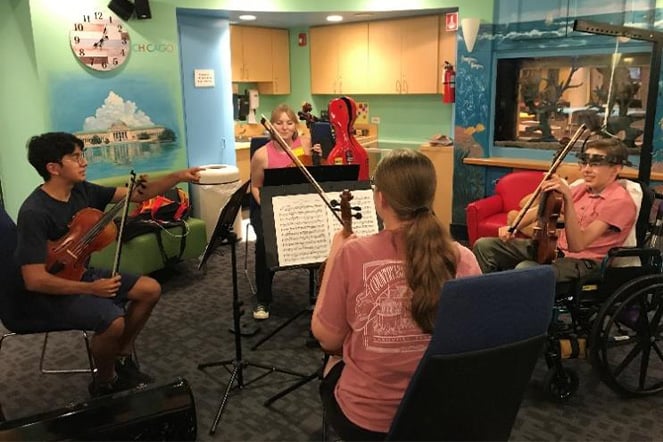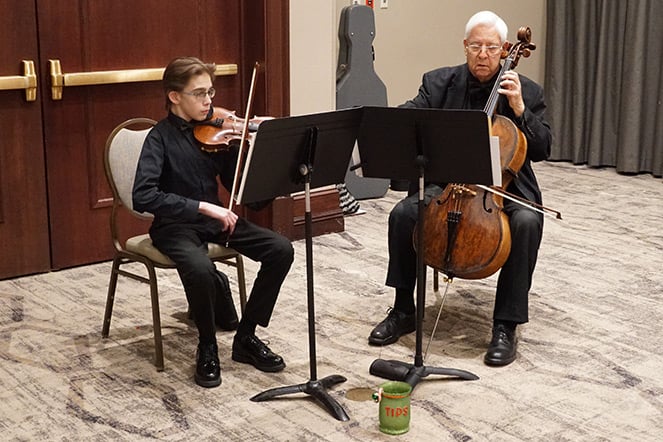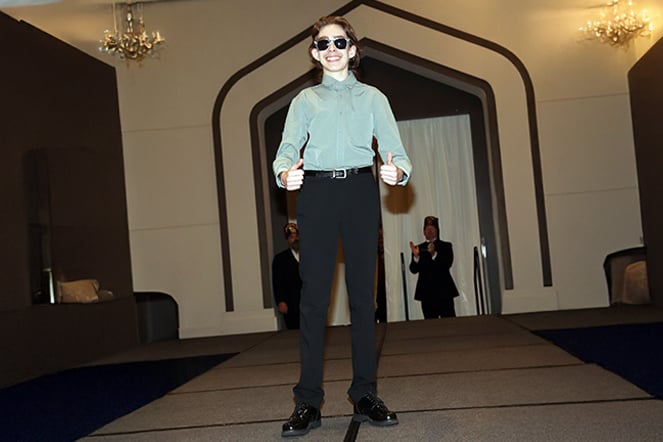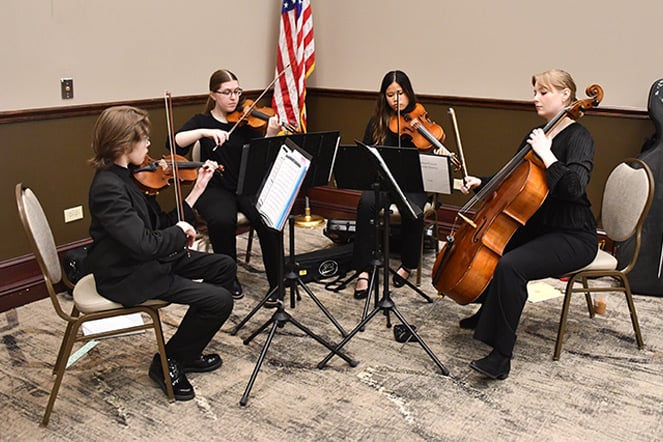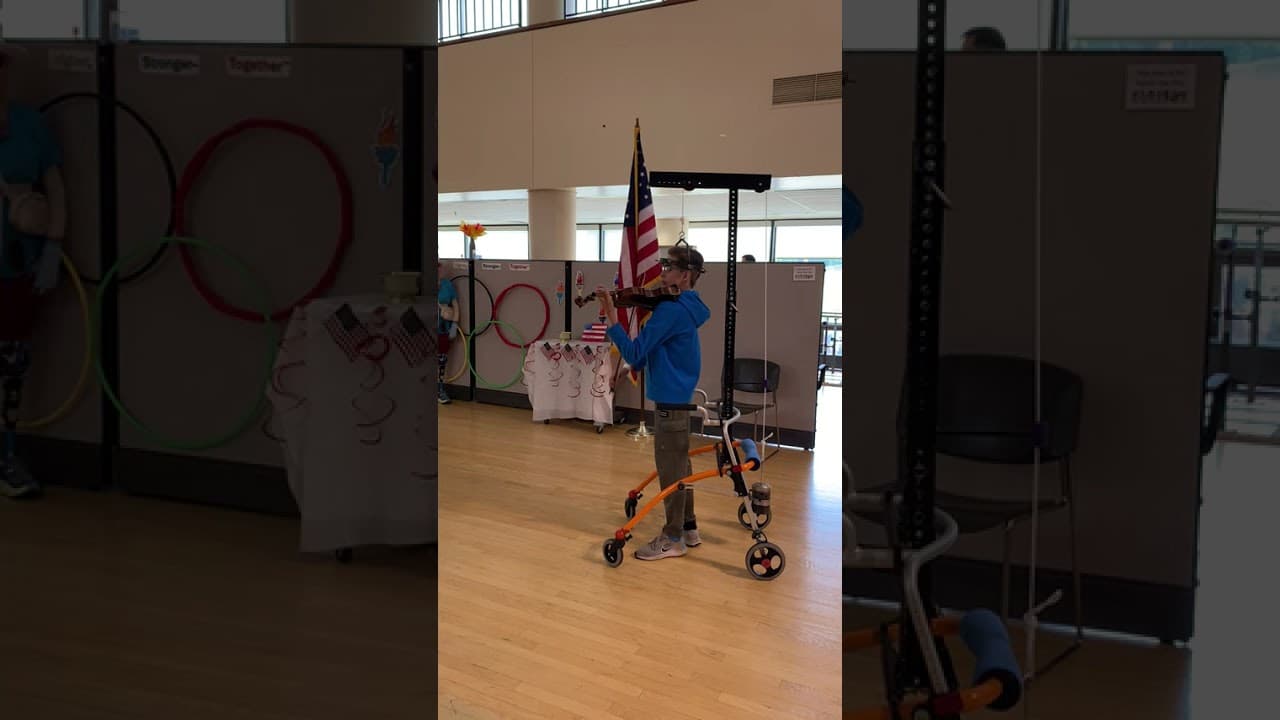Ezra was concerned that all those weeks away from the symphony while in halo might mean losing his spot in the ensemble he'd worked so hard to reach. To keep in practice, his music director suggested a new idea. What if Ezra and his quartet could hold weekly rehearsals at Shriners Children’s? The request was approved by the inpatient and spine care team, giving the quartet special access to the hospital’s Teen Lounge, which provided a small private space to rehearse.
Shriners Children’s Chicago is one of only a handful of facilities in the country that offers halo treatment and allows children to stay in the hospital throughout the entire multi-week treatment process. After halo traction, children usually have spinal fusion surgery to permanently straighten the spine. Dr. Szczodry said the halo-first approach reduces intraoperative risk of damaging the spinal cord and nerves, as well as soft tissues that surround and support the spine.
“I have witnessed incredible transformations with halo traction,” said Dr. Szczodry. “Kids who arrive with severe, stuck-out spinal curves see their spines gradually straighten and actually feel it straightening in the process. Although the setup can look uncomfortable, our patients typically like the feeling of being stretched and the feeling that comes with it. This treatment is part of our life-changing care for many of our kids and allows them to get back to doing the things they love sooner.”
Ezra just remembers those pins. “While halo traction was for the most part painless for me, I did learn that if I didn’t thoroughly clean my halo pins every day, they would become very irritated. The hardest part about halo traction is getting used to sleeping with six pins sticking out of your head,” said Ezra.
With his halo in place, his inpatient stay began. Ezra recalls telling his mom during the second week as an inpatient, “I love it here!” During his stay, he performed the Star-Spangled Banner at a Paralympic Games opening-day celebration for patients.
“Thanks to the willingness of the Hansen String Quartet members to drive all the way into Chicago, I was able to rehearse while in traction,” said Ezra.
After successful halo treatment, Ezra underwent posterior spinal fusion surgery on September 25, 2024, to address his 120-degree curve between T1 and L4.
“I am feeling great after surgery, although my first three weeks after were quite painful. The process of getting my nerves acclimated and reset was the biggest hurdle,” he said. “It's been half a year since spinal fusion and my life is pretty much the same with the exception of no BLT (bending, lifting or twisting). Six weeks after surgery, I was able to return to playing my violin, which in my opinion helped me recover faster and regain feeling in my back and left arm. Now I am back playing gigs and recitals.”
Children receiving halo traction often receive physical, occupational and recreational therapy from pediatric-trained therapists while they are in care at our location on the outskirts of Chicago. Many also participate in fun activities during their stay. Learn more about our advanced treatments for scoliosis.
